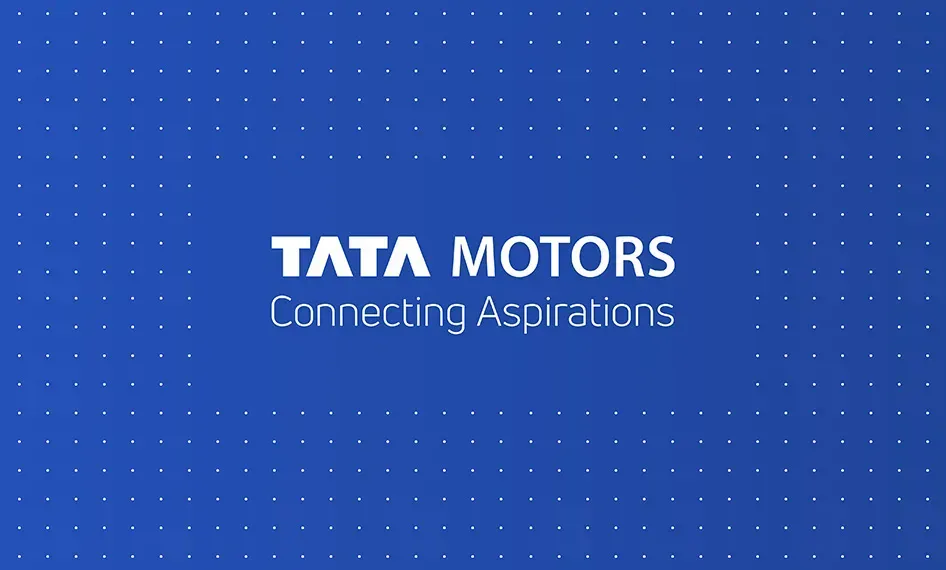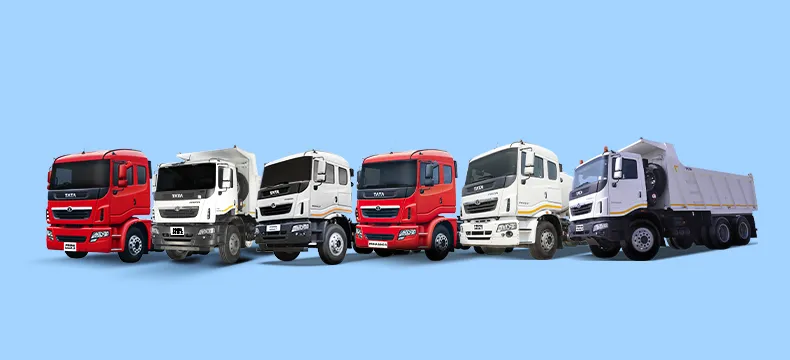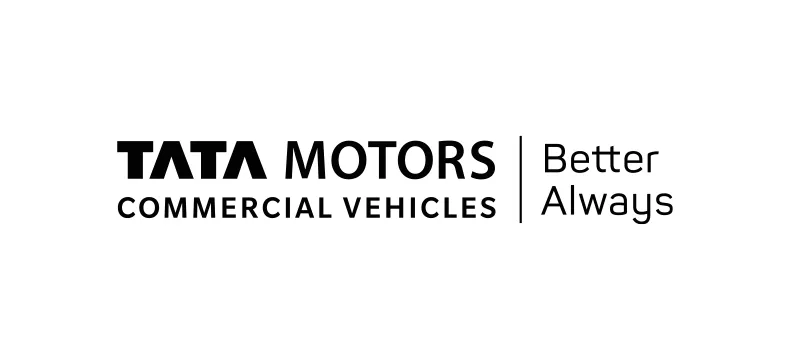12 Dec 2025

What Is a Commercial Vehicle?
- Tata Motors
- 30 Oct 2024
- COMMERCIAL VEHICLE
Introduction
In today’s dynamic Middle Eastern market, commercial vehicles are pivotal in supporting the movement of goods and passengers, thereby driving business growth and economic progress. But what exactly is a commercial vehicle, and why is it essential for businesses in this region? This comprehensive guide will delve into the definition of commercial vehicles, explore their various types, and highlight their importance in the Middle East. We will also discuss Tata Motors’ offerings and provide insights on how to choose the right vehicle, navigate regulations, and understand the registration process.
Commercial Vehicle: Definition and Meaning
A commercial vehicle is any motor vehicle designed and primarily used for transporting goods, passengers, or services that generate income. These vehicles are essential assets for businesses across industries, from logistics and construction to public transport and specialized services. Unlike private vehicles,Cargo Trucks: which are intended for personal use, commercial vehicles are built to handle the rigors of heavy-duty operations, longer distances, and frequent usage.
Types of Commercial Vehicles in the Middle East
When considering commercial vehicles in the Middle East, it's essential to categorize them based on their functions. This helps businesses choose the right type for their operations. Here's a breakdown of the main types:
-
Cargo Trucks:
These are vehicles designed to transport goods over various distances. They include light, medium, and heavy-duty trucks, which offer different payload capacities and are widely used in industries like logistics, manufacturing, and retail. Tata Motors offers models like the Tata Prima 4040.T, known for their robust power, load-carrying ability, and fuel efficiency.
-
Tippers:
Tipper trucks, also known as dump trucks, are used primarily in the construction, mining, and infrastructure sectors for transporting loose materials like sand, gravel, and demolition waste. The Tata Prima 4040.K model is a powerful example of a tipper truck designed to handle the rigors of heavy-duty operations.
-
Tractors:
Tractor trucks, commonly known as prime movers, are used for long-haul transportation of heavy goods. They are often paired with trailers for transporting bulk goods over long distances. Tata Prima 4440.S and Prima 6040.S offer advanced performance features, making them ideal for logistics companies and transporters in the region.
-
Pickups:
Pickups are light commercial vehicles (LCVs) suitable for small cargo loads or passenger transport in urban environments. Tata Motors offers versatile models like the Xenon SC (Single Cab) and Xenon DC (Double Cab), which are ideal for local deliveries and small business operations.
-
Buses:
Buses are a critical segment for transporting passengers across cities and towns. Tata Motors' LPO series includes buses like the LPO 916 and LPO 1618, which are used in public transport, schools, and corporate shuttles. These buses prioritize comfort, safety, and fuel efficiency.
Commercial Vehicle Advantages
Investing in a commercial vehicle offers numerous benefits that can significantly enhance your business operations in the Middle East:
-
Increased Efficiency:
Commercial vehicles are purpose-built to handle specific tasks, such as transporting large quantities of goods or multiple passengers. This specialization leads to increased operational efficiency and productivity.
-
Cost Savings:
Despite the initial investment, commercial vehicles offer long-term cost savings through durability and reduced maintenance needs compared to private vehicles. Owning a fleet can also reduce reliance on third-party logistics providers, further cutting costs.
-
Brand Visibility:
A commercial vehicle serves as a mobile advertisement for your business. Customizing the vehicle with your company’s branding can enhance visibility and create a professional image.
-
Flexibility and Control:
Owning commercial vehicles allows businesses to operate on their own schedule, meeting customer demands without depending on external providers.
-
Revenue Generation:
Commercial vehicles are assets that generate income, whether through expanded service areas for deliveries or through public and shuttle transport services.
Choosing the Right Commercial Vehicle for Your Business
Selecting the right commercial vehicle is a crucial decision that impacts your business’s efficiency and profitability. The choice depends on various factors, including the nature of your business, the types of goods or services you offer, and your specific operational requirements.
Assessing Your Business Needs
To choose the right vehicle, begin by assessing your business needs:
-
What type of goods or services does your business provide?
This will determine the type of vehicle required. For instance, a logistics company might need large trucks, while a service-oriented business may opt for passenger vans.
-
What are the typical loads you will carry?
Understanding the weight and volume of the loads you transport helps determine the appropriate payload capacity and vehicle size.
-
How far do you typically travel?
For businesses that operate within cities, prioritizing fuel efficiency and maneuverability is key. Those covering regional or international routes might need vehicles with larger fuel tanks and more powerful engines.
-
What is your budget?
Consider the initial purchase price and ongoing costs such as fuel, maintenance, insurance, and registration.
Evaluating Vehicle Specifications
Once you've assessed your needs, evaluate potential vehicles based on key specifications:
-
Payload Capacity:
Ensure the vehicle can handle your typical loads. Overloading can lead to increased wear, reduced efficiency, and legal penalties.
-
Engine Power and Performance:
The engine must be powerful enough for your operational needs, whether for urban driving or long-distance travel across varying terrains.
-
Fuel Efficiency:
A critical factor for managing operating costs, fuel efficiency should be balanced with performance requirements. Diesel engines are often favored in the Middle East for their torque and fuel economy.
-
Durability and Build Quality:
Look for vehicles constructed with high-quality materials and features like reinforced frames and robust suspension systems.
-
Comfort and Safety Features:
Features such as air conditioning, ergonomic seating, and advanced safety systems like ABS and electronic stability control are vital for driver comfort and safety.
Customisation and Specialisation
Many commercial vehicles can be customised to meet specific business needs:
-
Load Body Configurations:
Choose from flatbeds, box bodies, or refrigerated units based on your operational requirements.
-
Specialised Equipment:
Options include cranes, tail lifts, and other equipment essential for certain industries.
-
Branding:
Customise the vehicle’s exterior to display your company’s branding, enhancing visibility and professional appeal.
Considering Total Cost of Ownership (TCO)
When selecting a commercial vehicle, consider the Total Cost of Ownership (TCO), which includes purchase price and ongoing costs such as maintenance, fuel, insurance, and depreciation. Evaluating TCO helps ensure you choose a vehicle that offers the best value and aligns with your business’s financial goals.
Navigating Commercial Vehicle Regulations in the Middle East
Operating a commercial vehicle in the Middle East requires adherence to specific regulations that ensure safety and legal compliance. These regulations vary by country but generally cover registration, weight limits, and driver qualifications.
Vehicle Registration and Licensing
Commercial vehicles must be registered with the relevant authorities, involving proof of ownership, registration fees, and obtaining a commercial licence plate. Additional requirements might include proof of insurance and roadworthiness certificates.
Weight Limits and Load Restrictions
To maintain road safety and infrastructure integrity, commercial vehicles are subject to weight limits and load restrictions based on their axle configuration and gross vehicle weight. Compliance is critical to avoid fines and penalties.
Driver Qualifications
Operating a commercial vehicle requires specialised skills and knowledge, which is why many countries, including those in the Middle East, mandate specific qualifications for drivers of these vehicles. Ensuring that your drivers are appropriately licensed and trained is not only a legal requirement but also a crucial aspect of safe and efficient fleet management.
Licensing Requirements
Drivers of commercial vehicles must obtain a specialised licence, such as a Commercial Driver’s Licence (CDL), appropriate for the type and size of vehicle they will be operating. The type of CDL required can vary based on the vehicle class, such as LCV, MCV, or HCV. For example, a light commercial vehicle may only require a standard driver’s licence with specific endorsements, while heavy commercial vehicles necessitate a more advanced CDL, which includes training for handling larger, more complex vehicles.
Training and Competency
To obtain a CDL, drivers must undergo both theoretical and practical training. The theoretical component covers essential topics such as road safety regulations, vehicle operation laws, and best practices for loading and securing cargo. The practical training includes hands-on experience in driving the vehicle, manoeuvring in various conditions, and performing essential checks such as pre-trip inspections. Drivers must demonstrate proficiency in handling the vehicle safely and responsibly under different scenarios, including adverse weather, heavy traffic, and emergency situations.
Health and Fitness Requirements
Given the demanding nature of commercial driving, drivers must meet certain health and fitness standards to ensure they can perform their duties safely. These standards typically include regular medical evaluations to assess the driver’s vision, hearing, and overall physical health. Some conditions, such as untreated sleep disorders or severe cardiovascular issues, may disqualify individuals from holding a CDL. Additionally, drivers may be subject to periodic drug and alcohol testing to ensure they remain fit for duty.
Continuous Education and Recertification
The transport industry is continually evolving with new technologies, regulations, and safety protocols. Therefore, drivers are often required to engage in continuous education and training programs. These may include refresher courses on the latest safety standards, updates on regulatory changes, or training on new vehicle technologies such as advanced driver-assistance systems (ADAS). Periodic recertification ensures that drivers remain up to date with their skills and knowledge, which is crucial for maintaining their CDL.
Registering Your Commercial Vehicle: A Step-by-Step Guide
Registering a commercial vehicle in the Middle East involves securing a national transportation permit for legal operation, whether within the country or across borders. The process includes submitting necessary documentation, such as vehicle registration papers and insurance proof, complying with safety regulations, and paying relevant fees.
Step 1: Gather Required Documentation
The registration process begins with gathering all necessary documents. Key documents typically include:
- Vehicle Ownership or Registration Papers: Proof of ownership, such as a purchase invoice or a previously issued registration certificate.
- Insurance Proof: A valid insurance policy covering the vehicle, which meets the minimum requirements set by local authorities. This usually includes third-party liability coverage, and for certain operations, additional coverage such as cargo or passenger insurance might be required.
- Operating Licence for Business Activity: An operating licence issued by the relevant ministry or regulatory body, confirming that your business is authorised to conduct transport activities. This may include an approval or permit for the specific type of goods or passengers your vehicle will carry.
- Technical Compliance Certificates: These documents certify that the vehicle meets the technical and safety standards required for commercial operation. This can include a roadworthiness certificate from an authorised testing centre, emissions compliance certification, and, in some cases, proof of periodic maintenance.
Step 2: Comply with Technical and Safety Conditions
Before registration, ensure that your vehicle is equipped with the necessary safety measures, such as proper lighting, braking systems, and load-securing devices. In the Middle East, specific standards might include:
- Weight and Load Compliance: The vehicle must not exceed specified weight limits, which are set to protect road infrastructure and ensure safety. This includes adherence to axle load limits, total gross weight, and load distribution regulations.
- Safety Features: Required features may include anti-lock braking systems (ABS), electronic stability control (ESC), and reflective markings. For vehicles carrying hazardous materials, additional safety measures such as spill containment, proper signage, and emergency equipment may be mandated.
Step 3: Submit the Application
Applications for registering a commercial vehicle are typically submitted online via a government portal, such as the UAE PASS for the United Arab Emirates. This digital platform allows businesses to fill out necessary forms, attach required documents, and track the status of their application.
- Online Submission: Log in using your registered account, complete the required fields, and upload all necessary documents. Be sure to review your application for accuracy before submission.
- Application Review: After submission, the application is reviewed by the relevant authorities to ensure all criteria are met. This process may include a physical inspection of the vehicle by an authorised official to verify compliance with safety and technical standards.
Step 4: Pay Relevant Fees
Registration involves certain fees, which may include:
- Registration Fee: A standard fee for processing the registration of the vehicle.
- Permit Fees: Additional charges for specific permits, such as those required for cross-border transportation or special cargo types.
- Inspection Fees: If a physical inspection of the vehicle is required, there may be additional costs associated with this process.
Step 5: Obtain the Permit and Registration Certificate
Once your application is approved and all fees are paid, you will receive the vehicle’s registration certificate and a national transportation permit. This permit authorises your vehicle to operate legally under the conditions specified in the permit, whether within the country, between emirates, or across international borders.
Renewal and Compliance
Commercial vehicle registration and permits typically need to be renewed periodically, with renewal processes involving updated documentation, fees, and in some cases, repeat inspections. Staying compliant with ongoing regulations, including regular vehicle maintenance and adherence to safety standards, is crucial for uninterrupted operations.
Tata Motors Commercial Vehicles: A Range for Every Business Need
Tata Motors offers a comprehensive range of commercial vehicles designed to cater to the diverse needs of businesses in the Middle East:
Pickups: Xenon Series
The Xenon DC and SC are versatile pickups perfect for light cargo transport and delivery services, offering reliability and advanced handling across various terrains.
Intermediate and Light Commercial Vehicles: Ultra Series
The Ultra T.6, T.7, T.9, and T.16 are ideal for urban and intercity transport, providing excellent payload capacities, safety, and fuel efficiency.
Heavy Commercial Vehicles: Prima Series
The Prima 4040.T, 4040.K, 4440.S, and 6040.S are robust heavy-duty trucks designed for industries like construction and long-haul transport, equipped with powerful engines and advanced technology.
Buses: LPO Series
Tata’s LPO 916 and 1618 models cater to various passenger needs, including school, staff, and city buses, prioritising safety, comfort, and efficiency.
Conclusion
Understanding commercial vehicles and their applications is crucial for any business relying on transport for goods or passengers. By selecting the right vehicle and navigating regulatory requirements, businesses in the Middle East can enhance operational efficiency, reduce costs, and boost profitability.
FAQs
What defines a commercial vehicle?
A commercial vehicle is a motor vehicle used primarily for transporting goods, passengers, or services that generate income, subject to specific regulations.
Do I need a special licence to drive a commercial vehicle?
Yes, driving a commercial vehicle often requires a specialised licence, such as a Commercial Driver’s Licence (CDL), depending on the vehicle type and local regulations.
Tata Motors provides reliable and versatile options for businesses, including the Prima 4040.K, Prima 4440.S, and Ultra T.9, designed to meet the demands of the Middle East market.
- Tags





















